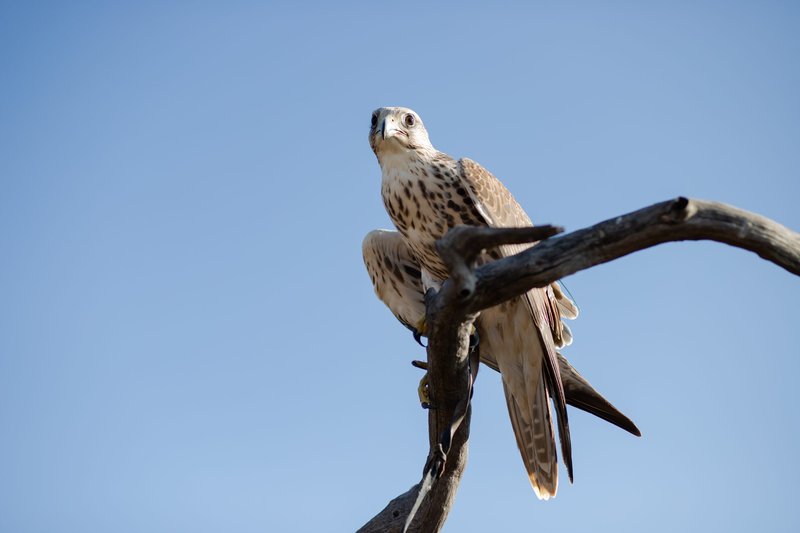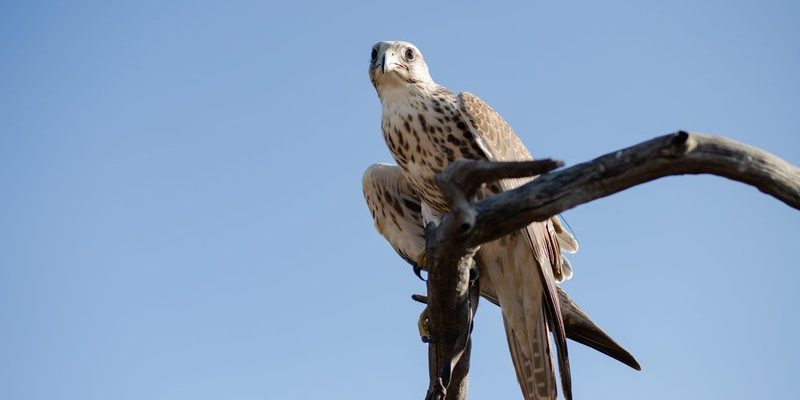
Understanding Saker falcon vocalizations is not just a casual interest for birdwatchers; it’s a window into their lives and behaviors. Just as we use tone and pitch to convey feelings, Saker falcons do the same with their calls. So, grab your favorite coffee, and let’s dive into the world of these incredible birds and their unique sounds.
What Are Saker Falcon Vocalizations?
Saker falcons are known for their impressive hunting skills and striking appearance, but their vocalizations are equally captivating. These birds produce various sounds that serve different purposes, much like we use words, tones, and gestures to communicate with each other. Generally, their vocalizations can be divided into three main categories: mating calls, alarm calls, and territorial sounds.
1. Mating calls are typically more melodic and softer, designed to attract partners during the breeding season. Think of it as a serenade meant to woo a potential mate.
2. Alarm calls are short, sharp, and serve as warnings to other birds about potential threats, like predators. Imagine a quick shout to get someone’s attention in a crowded room—these calls signal danger.
3. Territorial sounds are often loud and aggressive, announcing their presence and warding off intruders from their territory. It’s like a bold statement, making it clear that they mean business.
Understanding these categories helps us appreciate why Saker falcons vocalize the way they do.
The Importance of Vocalizations for Communication
You might be wondering why vocalizations are so crucial for Saker falcons. Well, for these birds, sound is a key aspect of their social structure. Just like humans use language to form connections and express feelings, Saker falcons rely on their calls to communicate with each other.
For instance, during the breeding season, a male Saker falcon will often perform a distinctive mating call to signal his interest. This call not only attracts females but also reinforces pair bonds between mates. Once a pair is formed, their vocalizations help maintain that relationship, as they continue to communicate during nesting and raising young.
Alarm calls are equally vital. When a Saker falcon spots a potential predator—like an eagle or a human—it emits a sharp alarm that alerts nearby birds. This quick communication can mean the difference between safety and danger for the entire flock.
In this way, vocalizations serve as both a personal expression and a group safety measure, showcasing the importance of sound in their daily lives.
Common Vocalizations of the Saker Falcon
Let’s take a closer look at some of the specific sounds Saker falcons make. Each vocalization carries its own meaning and context.
- Chirps: These soft, high-pitched sounds are often heard when Saker falcons are communicating with their chicks, signaling comfort or feeding time.
- Wheezes: A sort of raspy sound, wheezes can indicate excitement or agitation. You might hear this during courtship displays or when a falcon feels threatened.
- Staccato Calls: Quick, repetitive bursts of sound serve as alarm calls. They’re used to warn others about nearby threats and sound like a siren going off.
- Raspy Calls: These are more aggressive and territorial, often used to assert dominance or fend off other males during breeding season.
Each of these sounds has its own role in the life of a Saker falcon. Whether it’s nurturing young or defending territory, these vocalizations are essential for survival and reproduction.
How Vocalizations Change with Context
It’s fascinating how the context can influence the sounds a Saker falcon makes. For example, during courtship, you might hear a series of soft, melodic calls that signal attraction and bonding. But if a falcon encounters an approaching threat, those same vocalizations might shift to sharp, urgent alarm calls.
This adaptability is not unique to Saker falcons; many birds adjust their vocalizations based on their surroundings and social situations. It’s almost like they have a built-in vocal switch that flips depending on who’s around and what’s happening.
Birdwatchers often notice this behavior. When you’re out observing these beautiful creatures, listen closely. You might catch a male falcon performing an elaborate display of calls, only to switch suddenly to alarm calls when a potential predator emerges. Understanding these shifts can enhance your appreciation of their communication skills.
Vocalizations in the Breeding Season
The breeding season is when Saker falcon vocalizations become most intricate and varied. During this time, you’ll find males performing elaborate calls to woo females. These vocalizations are not just random sounds; they are carefully crafted serenades that showcase the male’s health and fitness.
A male that can produce a strong, resonant call is often seen as more attractive to potential mates. Think of it as a mating dance, where vocalization plays a key role. Males might also engage in aerial displays, mixing flight patterns with their sounds to further impress females.
Once a pair has formed, their calls take on a different tone. They may use softer chirps and whistles to communicate with each other, particularly when nesting or feeding their young. This softer communication indicates trust and affection, essential for successful breeding and raising chicks.
How Human Activities Impact Saker Falcon Vocalizations
Unfortunately, human activities can disrupt the natural behaviors and vocalizations of Saker falcons. Urbanization, agriculture, and hunting pressure can alter their habitats and affect their communication methods. For instance, increased noise pollution can make it challenging for falcons to hear each other’s calls, potentially leading to misunderstandings or missed warnings.
Additionally, habitat loss forces falcons to adapt, sometimes resulting in changes to their vocalizations. They may have to use louder calls to be heard over background noise, which could impact their mating success. Conservation efforts are crucial to ensure these magnificent birds can thrive and communicate effectively in their environment.
By recognizing how our actions can affect their vocalizations, we can better appreciate the relationship between humans and wildlife.
Final Thoughts on Saker Falcon Vocalizations
Saker falcon vocalizations are more than just pleasant sounds; they’re a crucial part of their lives, representing communication, emotion, and survival. Whether it’s the soft chirp of a parent calling to its chick or the fierce alarm call alerting others of danger, each sound tells a story about these incredible birds.
Understanding their vocalizations not only deepens our appreciation for Saker falcons but also highlights the need for conservation and protection of their habitats. Next time you find yourself outdoors, take a moment to listen. You might just hear the fascinating sounds of a Saker falcon, communicating its own unique story to the world.

